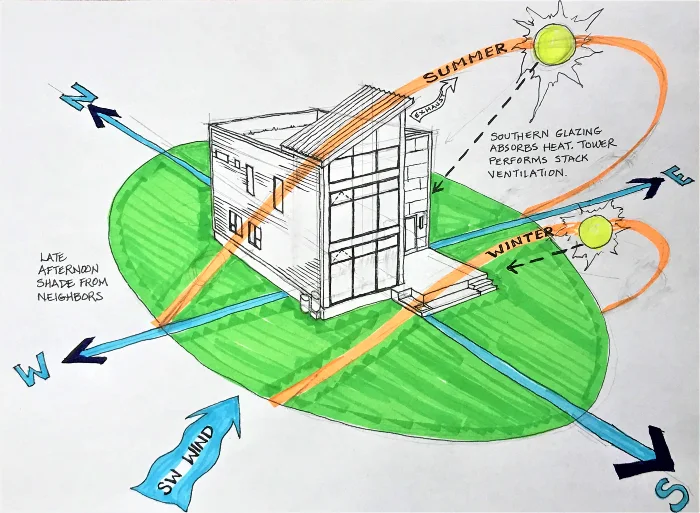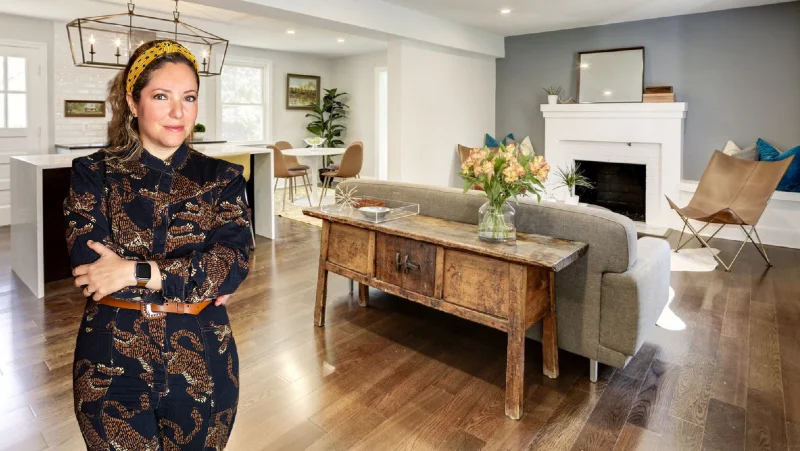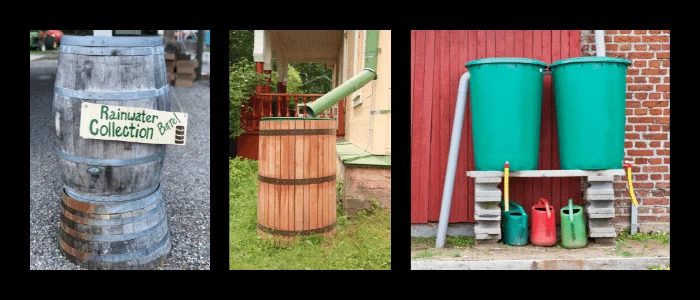Green Living: Embracing the Future with Sustainable Home Features
Stepping into a new home marks the beginning of a new chapter, and what better way to start than by embracing sustainability? Transitioning into an eco-friendly living space not only benefits the homeowner by reducing energy costs, but also significantly lessens environmental impact. The essence of eco-homes lies in their ability to utilize renewable resources effectively, minimize energy consumption, and conserve vital natural resources like water.
Although the idea of transforming a house into an environmentally friendly sanctuary might seem daunting or financially strenuous, integrating sustainable design elements is more feasible than many realize. From smart appliances and green building materials to efficient heating systems, each component of your home can contribute to a broader sustainability agenda. For those pondering whether to retrofit an existing house with green enhancements or construct a bespoke eco-dwelling from scratch, here are the pivotal features recommended by experts to make your home truly sustainable.
1. Harnessing Natural Elements through Passive Design

At the heart of every sustainable home is a foundational approach known as passive design. This strategy is essential, particularly when plotting out a new construction with your architect. Passive design ingeniously reduces a home’s ecological footprint by leveraging the natural climate and landscape. An essential aspect involves considering the house’s orientation relative to the sun.
Candace Rodriguez, senior director of sustainability at Home Depot, advises, “Maximize south-facing windows in colder climates to increase direct sunlight in the winter. This will help heat your home and reduce your reliance on artificial light.” She also recommends strategic landscaping: “Plant a tree that loses its leaves in the winter on the south side of your house. It’ll block the sun from streaming into your home in the summer and allow light through in the winter.”
Moreover, Rodriguez highlights how architectural features can contribute to passive heating and cooling. “The shape and size of your roof are pivotal. A large overhang permits sunlight during the winter when the sun is higher in the sky, while in the summer, it serves to block the sunlight, thus keeping your home cooler,” she explains.
2. Geothermal Heat Pumps: A Long-term Investment in Sustainability

For those considering significant renovations or constructing a new home, integrating a geothermal heating, and cooling system could be a game-changer. This system utilizes the stable temperatures found just beneath the Earth’s surface to regulate home temperatures efficiently.
Leslie Schneeberger, an architect, and owner of Schneeberger Collective in Massachusetts, elaborates on this technology: “[Geothermal energy] relies on harnessing relatively even subterranean temperatures. The trenches for this system can be deep or lateral, depending on your available land.”
Although the initial costs for installing geothermal pumps can be substantial—ranging from \$15,000 to \$50,000 according to Angi—the investment pays off. Schneeberger points out, “The savings on energy costs can often be recouped within 5 to 10 years of installation,” echoing data from the US Office of Energy Efficiency & Renewable Energy.
3. Home Renovations with Recycled Materials

The quest for sustainability extends into the very materials that make up our homes. One of the most transformative ways to embody eco-friendliness is by choosing recycled materials for your home renovations. For those who favor unique, character-rich elements over the commonplace, shops like Habitat for Humanity’s ReStore or various architectural salvage outlets offer a treasure trove of materials ripe for repurposing.
Gabriela Narvaez, a general contractor and the founder of Guild Properties, champions this sustainable approach. “You can retrofit pretty much any old piece of furniture into the space you need it for,” Narvaez shares. Her recent projects include transforming antique console tables and armoires into stylish, functional bathroom vanities. “I love doing this because not only will you have a totally unique piece in your new space, but you’ll also be recycling and repurposing previously used materials into your home instead of buying a mass-produced product,” she explains.
4. Enhancing Efficiency with Advanced Window Solutions
The choice of windows in a home plays a crucial role in energy conservation. Manny Angelo Varas, president, and CEO of MV Group USA, and other experts emphasize the benefits of installing energy-efficient windows. If you’re in the market for new windows, consider triple-glazed windows, known for their superior insulation properties.
Leslie Schneeberger, a forward-thinking architect, elaborates on the advantages: “These have a much better insulation value, and with the right films, can cut down on not only solar heat gain but also UV rays that can damage artwork, fabrics, and finishes.” The cost of triple-glazed windows varies significantly, ranging from $400 to $3,540, but they are considered a worthwhile investment for the long-term energy savings and environmental benefits they offer.
Candace Rodriguez from Home Depot adds, “The lower the U-value—or the rate at which the window loses non-solar heat—the better the windows will keep heat in your home,” highlighting the technical aspects that make these windows a smart choice for eco-conscious homeowners.
5. The Power of Solar Panels

The adoption of solar panels is increasingly recognized as a cornerstone of sustainable home design. Cheneil Lowe, a realtor and green designee of the Atlanta Realtors Association’s sustainability committee, frequently advises clients on selecting the best solar solutions for their homes. “With solar panels, homeowners can significantly reduce their dependence on traditional electricity sources, leading to substantial savings on their electric bills over time,” Lowe points out.
The financial benefits are compelling: homeowners can save between \$12,000 and \$30,000 over 20 years by installing solar panels, according to Rodriguez. Beyond monetary savings, the environmental impact is profound. A UC Berkeley study highlighted by Rodriguez found that a residential solar system can power a home with 80 percent lower carbon emissions compared to fossil fuels, making it a pivotal strategy for those committed to reducing their carbon footprint.
6. Choosing Eco-Friendly Appliances
As we delve deeper into sustainable living, choosing the right appliances becomes crucial. Rob McGibney, president and COO of KB Home, emphasizes the importance of selecting appliances that align with environmental standards. He recommends opting for products that are Energy Star-certified and WaterSense labeled—both initiatives of the Environmental Protection Agency that ensure high standards of energy efficiency and water conservation. “Think about water-conserving faucets and toilets, smart appliances that maximize energy and water performance, and other features that make living more sustainably even easier,” he advises. Such choices not only reduce household utility bills but also contribute significantly to conserving vital resources.
7. Smart Home Technology: Enhancing Efficiency Through Innovation
The integration of smart technology in home design not only offers convenience, but also significantly boosts a home’s energy efficiency. Realtor Cheneil Lowe frequently advises her clients on the benefits of smart thermostats, which allow homeowners to adjust their heating and cooling settings remotely.
“You’ll be able to adjust your temperature settings when you’re away, and some smart thermostats track your energy consumption so you stay on track,” adds Candace Rodriguez from Home Depot.
Further enhancing the smart home experience, Wi-Fi-enabled lighting and automated shades can dramatically improve a home’s energy management. Leslie Schneeberger highlights, “There are some amazing lighting systems, such as Lutron’s Ketra system, that adjust lighting and shading throughout the day to match our natural circadian rhythms and perfectly balance with outdoor lighting conditions.” This not only supports occupant health and well-being by mimicking natural light patterns but also cuts down on unnecessary energy expenditure.
8. Choosing Formaldehyde-Free Cabinets
Indoor air quality is a major concern in modern homes, and choosing the right materials can make a significant difference. Many commercially available cabinets use formaldehyde in the adhesives that bind their panels, which can off-gas into homes, deteriorating indoor air quality. Gabriela Narvaez points out an alternative, “Solid wood is always a formaldehyde-free option,” offering a safer, cleaner choice for environmentally conscious homeowners.
For those seeking out toxin-free cabinet options, several companies stand out, including Puustelli Kitchens, Bertolini, KERF, and PureKitchen. Leslie Schneeberger also suggests consulting resources like the Healthy Materials Lab at Parsons School of Design to find sustainable materials and suppliers that prioritize health and safety alongside aesthetics and functionality.
9. Rainwater Harvesting Systems: A Smart Solution for Water Conservation

Rainwater harvesting systems are an invaluable feature for eco-conscious homeowners. These systems capture rainwater from rooftops, which is then funneled into storage tanks for later use. The collected water can serve various purposes around the home, including irrigation for gardens, flushing toilets, and with the right treatment, it can even be made suitable for drinking.
Implementing a rainwater harvesting system reduces reliance on municipal water supplies, which is particularly beneficial in areas prone to drought or where water usage restrictions are common. Additionally, these systems help manage stormwater runoff, preventing potential soil erosion and waterlogging in your property.
Experts like Gabriela Narvaez, who advocate for sustainable building practices, highlight the dual benefits of rainwater harvesting. “Not only does it lessen your environmental footprint by conserving water, but it also cuts down on your water bills, making it a cost-effective addition to any eco-home.”
More To Discover
By integrating a rainwater harvesting system into your home’s design, you’re not just saving water; you’re investing in a sustainable future, enhancing your home’s efficiency, and contributing to a healthier environment.
As we wrap up our exploration of eco-friendly home features, it’s clear that sustainable living is within reach for today’s homeowners. By incorporating these advanced technologies and materials, individuals can craft living spaces that aren’t only environmentally responsible but also healthier and more economical in the long run.



















